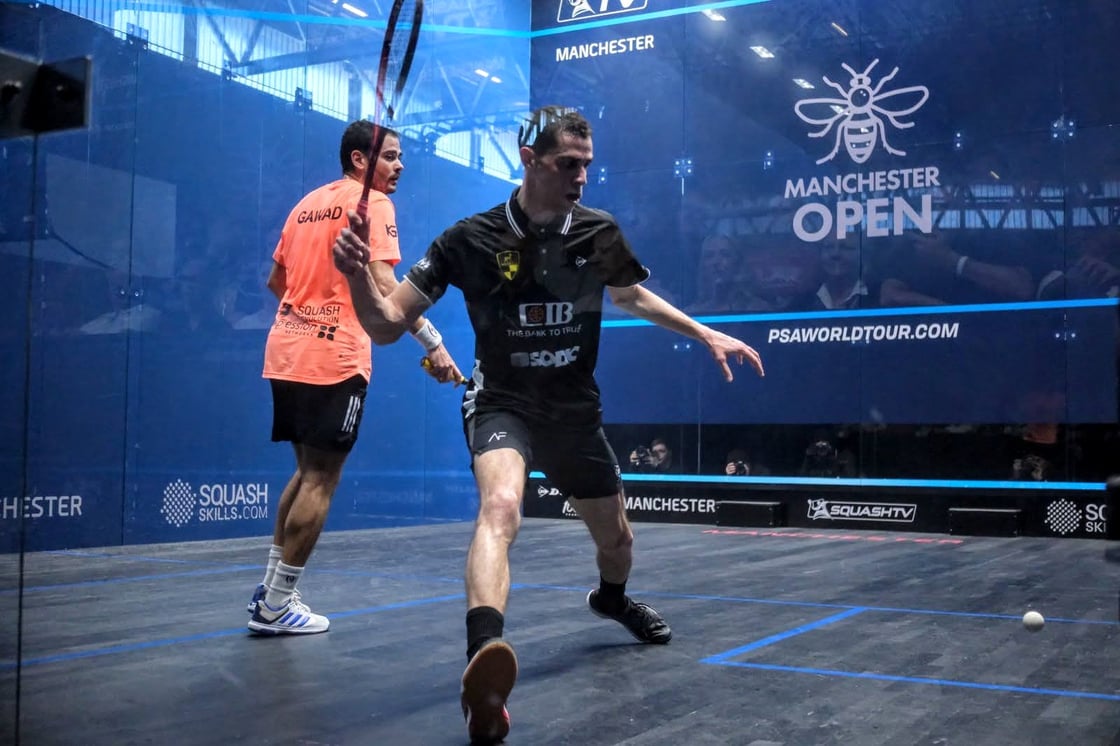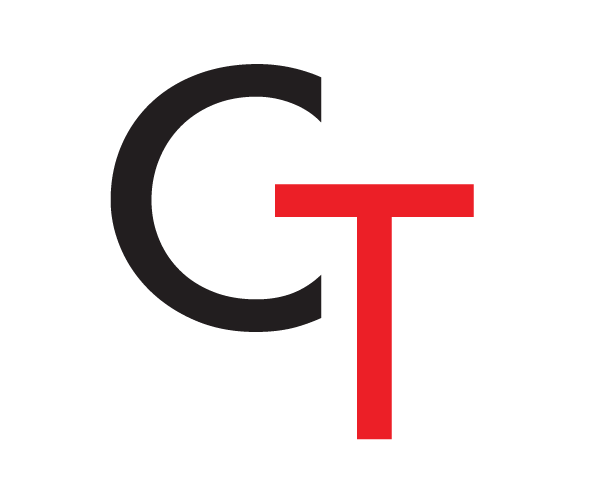The boast might just be my favourite shot in squash, the main reason being how creative you can get when deploying boasts into your game plan.
There are a bunch of variations of boast and, like any shot, there are right and wrong times to utilise each one, so, in this article I'll be going through each boast and giving my advice for execution, I'll also provide a few drills for practicing your boasts at the end.
Before I dive in, I'll quickly define what a boast actually is for any readers who may be a little newer to the game.
A boast is a type of shot where the ball is intentionally aimed toward the side wall before rebounding off it and returning toward the front wall.
You can attack or defend with a boast, with the objective generally being to either buy yourself a bit of extra time to get out of a sticky situation or disrupt your opponent's movement and positioning.
But, of course, it's a bit more complicated than that, so, let's dive in...
The Three Wall Boast
Arguably the most traditional of the boasts, the three-wall boast hits the side wall, then the front wall, then the side wall again before bouncing on the floor for the first time.
The ideal target you should be aiming for with a three-wall boast is for the ball to land as close as possible to the nick (the corner between the final side wall that the shot hits and the floor).
Nine times out of ten, the three-wall boast should be played from the back corners of the court (usually after your opponent has played a high-quality straight or crosscourt length that you may struggle to return with another length).
Traditionally, the three-wall boast tends to be thought of as a defensive shot, as the ball takes a lot more time to hit each wall before bouncing. This gives you a great bit of extra time to recover and move back to the T.
This is in contrast with a two-wall boast (which I'll be talking about next), as the two-wall boast generally dies a lot quicker after just hitting the side and the front wall, but more on that later.
However, if you ever watch professional squash, you may notice that many players use the three-wall boast in an attacking way too.
If you find the right angle and hit the ball with a decent level of pace, it is very possible to play a fast three-wall boast that dies in the nick before your opponent has the chance to retrieve it.
Mazen Hesham is an absolute master of this shot. Click here to watch a short clip of him executing a perfect three-wall boast to win a rally against Joel Makin (but make sure to come back to the newsletter after).
However, playing an attacking three-wall boast definitely takes some skill so make sure you're confident in your ability to execute the shot in training before deploying it in a match situation.
The Two Wall Boast
The two-wall boast is played by, you guessed it, hitting just the side then the front wall before the ball bounces.
This is generally seen as more of an attacking shot. Your target for a good two-wall boast is as low as possible on the front wall above the tin, and it should be played with a bit of pace and cut to make it die (bounce twice) as fast as possible before your opponent has the chance to get to it.
It can be played from the middle of the court or the back of the court, however, when it's played from closer to the front of the court, it's called a trickle boast (a shot that I'll cover next).
The two-wall boast is quite a simple shot, but it does require a good level of skill to play accurately. Just make sure to incorporate it into your training to become confident enough to play it in a match situation.
I would also note that any boast, if played inaccurately, can give your opponent a massive advantage and an opportunity to attack to put you on the back foot, so make sure to play your boasts with caution!
The Trickle Boast
The trickle boast is a great little shot that is often used as an attempted winner. It's essentially a very short two-wall boast that's played right at the front of the court.
Generally, it's most effectively played using a bit of disguise, for example, show your opponent that you're going to play a straight drop shot, then flick the trickle boast at the last second to throw them off guard.
You can play this shot with a little bit of pace, or as soft as you like, but again, as with the two-wall boast, the goal is to make the ball bounce twice as fast as possible before your opponent has the chance to pick it up.
Adding some slice is always a good idea and try to get it to hit as low as possible on the front wall (while avoiding the tin of course).
Even if they do pick it up, if you've played a good trickle boast, it will have made them scramble and make an awkward movement to return. So, hopefully, it puts them under a bit of pressure, giving you another chance to attack.

Photo credit: Steve Cubbins
The Skid Boast
This is my favourite shot in the game of squash!
The skid boast is usually played from the back of the court, the idea is to hit it very hard and very high on the side wall and then the ball will hit the front wall and the momentum and angle will carry it to the back corner on the other side of the court.
The skid boast can be played from the front of the court too, although, it's often not necessary to do so since a regular lob will usually do the same job!
It can be a pretty tricky shot for your opponent to return as, since the ball has hit ether two or three walls at pace, it usually has a lot of spin on it, meaning that it will bounce funny when it lands, or it will come of the racquet strangely if your opponent tries to volley it.
It's the perfect shot for buying yourself time, as the skid boast takes a heck of a long time to hit each wall and land in the back, by which time, you should have composed yourself and hopefully jumped back onto the T.
This can be a pretty hard shot to execute and, if you don't hit it accurately or it lands too short, your opponent will get an opportunity to attack and you'll struggle.
I'd also advise against playing it too often as your opponent will begin to anticipate it. I'd say to keep the skid boast to a maximum of 3 per game, but even that could be considered quite a lot.
This depends on your opponent and their style of play too.
The Reverse Boast
Often referred to by PSA commentators as a 'leisure centre boast', the reverse boast is disliked by many and some people think it's an 'old person' shot, but personally, I really like the shot.
But, it should not be played very often, I'd say it should be played no more than once or twice per game.
The reverse boast is basically when you hit the ball off the side wall furthest away from you. For example, if I'm on the backhand side and I hit a reverse boast, it would hit the forehand side wall, then the front wall, and would land back on the backhand side again.
It can be considered as quite a dangerous shot for amateur players to play, so if you're going to play one, make sure to be aware of where your opponent is.
Bonus Boast: The Back Wall Boast
I thought it was worth touching on the back wall boast because, although it's not played often, it can be very useful for keeping yourself in a rally and giving yourself a bit of time.
It's pretty simple to execute really, but for newer players it might take some practice to find the right pace and angle to execute the shot.
A back wall boast is played by hitting the ball against the back wall after your opponent's shot has bounced and it then reaches the front wall.
Obviously, this gives your opponent a pretty strong advantage in the rally as they have the opportunity to play pretty much any shot and they could add some real pressure by taking the ball early, so make sure to play your back wall boasts with caution!
It's essentially a last resort to keep yourself in the rally, but, it's still worth thinking about targets and where the ball is going to land. Try to aim for it to land close to either of the side walls rather than right in the middle of the court.
Drills For Boasting
There are countless drills for working on your boasts, but I have a few personal favouites.
Boast drive is probably the first one that springs to mind, it's pretty simple really...
One player is at the back of the court boasting and the other player is at the front playing either a straight drive or a crosscourt drive back.
I use this drill as a warm-up exercise before training or playing a friendly.
Hitting your targets with boasts is the most important thing to think about when doing any type of boast. Think about which type of boast you're going for and exactly where you want the ball to land on each wall.
Try to experiment with different paces and angles to find the nick if you're going for three wall boasts, or, to try to make the ball die fast if you're going for two wall boasts.
Another great drill is front vs back, where one player has to play every shot to land in the back of the court and the other player plays every shot to land in the front of the court.
This one is great because it allows you to save your boast for the right time and experiment with positioning and timing in a situation that's a little closer to real match play.
Your opponent will also most likely be playing quite accurate lengths from the front of the court, which will help you get a feel for boasting when under pressure and using the shot to help you recover.
The final drill I'd advise trying out is a length game to the back of the court in which every shot has to be a drive. A boast can be played from the back of the court, then the other player has to go and retrieve it and can either play a straight drive or a cross court drive from the front.
This drill is great for incorporating movement back to the T into your boasting practice, as well as practicing the best times to play the shot.
Remember, you can add scoring into any of these drills to make them a little more competitive!
This article was taken from our On The 'T' Newsletter, if you're interested in receiving more content like this, please feel free to sign up using the subscribe section located at the bottom left of this page (or underneath the article if you're on mobile), thanks!
